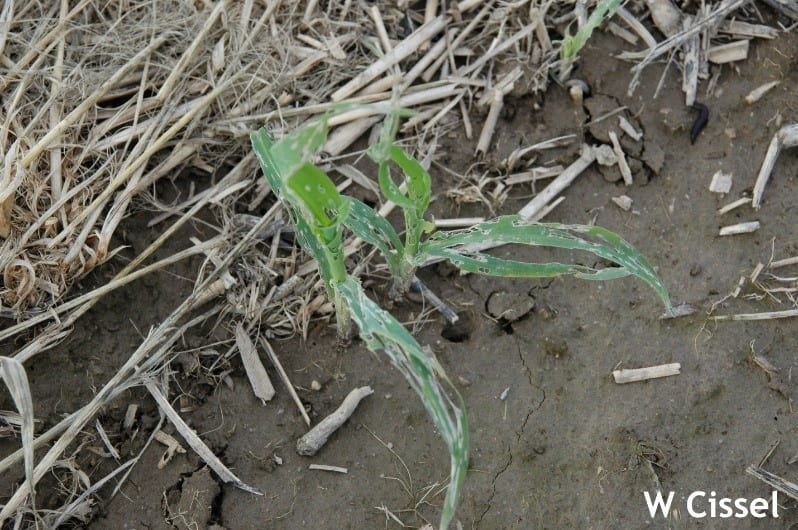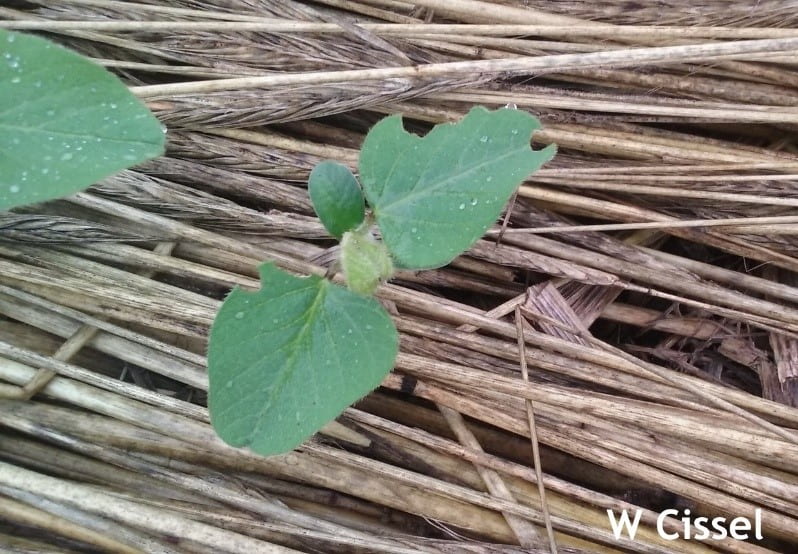Bill Cissel, Extension Agent – Integrated Pest Management; bcissel@udel.edu
Alfalfa
Begin sampling alfalfa for potato leafhoppers weekly until final harvest. Ten sweep net samples should be taken in 10 random locations throughout the field when the alfalfa is dry. The threshold for alfalfa 3” or less is 20 leafhoppers per 100 sweeps, 4-6” tall is 50 per 100 sweeps, 7-10” tall is 100 per 100 sweeps and greater than 11” is 150 per 100 sweeps. If the field is more than 60 percent bud stage or if it has experienced “hopper burn”, the alfalfa should be cut instead of sprayed.
For more information on the identification, biology, and management of potato leafhoppers, please review our fact sheet: http://extension.udel.edu/factsheets/potato-leafhopper-control-in-alfalfa/
Here is a link to our Insect Control in Alfalfa Recommendations (pure stands only): https://cdn.extension.udel.edu/wp-content/uploads/2012/05/18063238/Insect-Control-in-Alfalfa-final-for-2017.pdf
Field Corn
Continue to sample fields for slug injury. Here is a link to information from previous WCU articles on slug management in corn: http://extension.udel.edu/weeklycropupdate/?p=10303
As barley matures, watch for true armyworm movement into neighboring corn fields. Fields planted into a small grain cover crop, pastures, and weedy fields are also at an increased risk for true armyworm infestations. The threshold for true armyworms in corn is 25% infested plants with larvae less than 1”. Once the larvae move into the whorls and if they are larger than 1”, control will be difficult. Worms greater than 1.25” have completed their feeding.
Here is a link to our Field Corn Insect Management Recommendations for Chemical Control Options: https://cdn.extension.udel.edu/wp-content/uploads/2012/05/13055805Insect-Management-In-Field-Corn-final-20171.pdf
Soybeans
Continue to sample fields for slugs and other defoliators. This past week, I have seen several fields with grasshopper injury. Soybeans can typically withstand a decent amount of defoliation before yield losses occur, however, if stands are being reduced, an insecticide application may be warranted. A treatment may also be needed if you are finding one grasshopper per sweep and greater than 30% defoliation. (Note: once plants reach bloom and pod fill stages, the threshold for defoliation is reduced to 15%).
Grasshopper feeding injury on seedling soybeans. Notice the irregular shaped holes and leaf feeding from the leaf margins, a good indication of grasshopper feeding.
Another example of grasshopper feeding injury on seedling soybeans. Again, note the irregular shaped holes and leaf feeding from the leaf margins.
In addition to grasshoppers, also keep an eye out for bean leaf beetle damage (chewing on cotyledons and small round holes in unifoliate and trifoliate leaves). This can often be confused with slug damage so look for slime trails, slugs, and beetles. The threshold for bean leaf beetles is 2 per ft of row and 25% stand reduction from emergence to 2 trifoliate. After 2 trifoliate, the threshold is 2-3 per plant and 30 percent defoliation.

Bean leaf beetle feeding injury. Bean leaf beetles will often drop from the plants when disturbed and are excellent at hiding in crop residue.

Slug injury on soybean unifoliate leaves. In some cases, this damage can look similar to damage from bean leaf beetles so when diagnosing the cause, be sure to look for slugs, slug slime trails, and for beetles.
Here is a link to our Soybean Insect Management Recommendations: https://cdn.extension.udel.edu/wp-content/uploads/2012/05/18063934/Insect-Control-in-Soybeans-2017-final.pdf
Small Grains
I continue to hear reports of wheat and barley fields that have reached threshold for true armyworms. If you haven’t been scouting your fields, be sure to do so. With barley harvest approaching, make sure you review label restrictions for days to harvest before making an application.
Link to last week’s article on true armyworm in small grains: http://extension.udel.edu/weeklycropupdate/?p=10413
Grass sawfly and true armyworm fact sheet: http://extension.udel.edu/factsheets/grass-sawfly-and-true-armyworm-management-in-small-grains/
Small Grain Insecticide Recommendations: https://cdn.extension.udel.edu/wp-content/uploads/2012/05/18063827/Insect-Control-in-Small-Grains-final-2017.pdf




